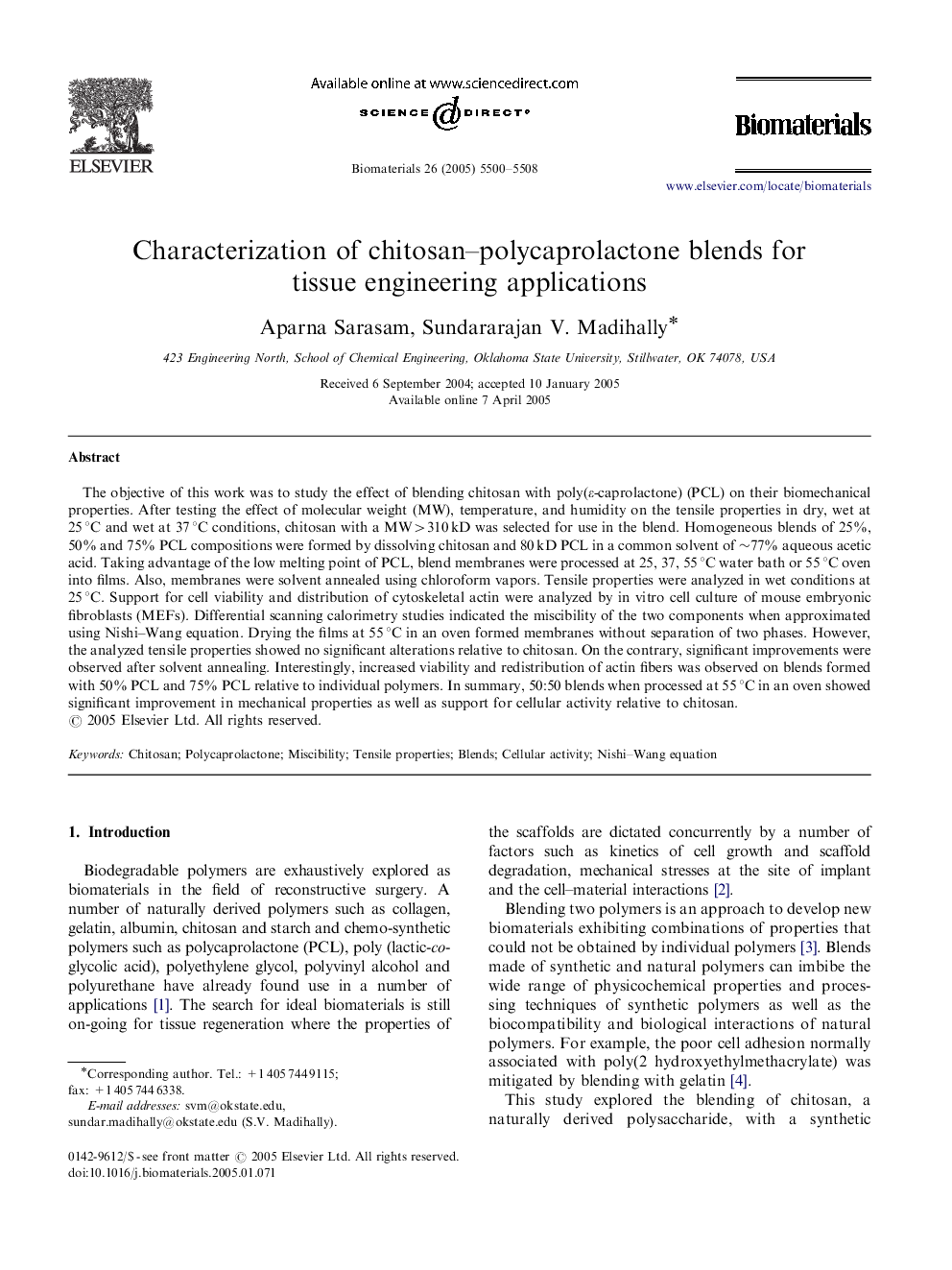| Article ID | Journal | Published Year | Pages | File Type |
|---|---|---|---|---|
| 12005 | Biomaterials | 2005 | 9 Pages |
The objective of this work was to study the effect of blending chitosan with poly(εε-caprolactone) (PCL) on their biomechanical properties. After testing the effect of molecular weight (MW), temperature, and humidity on the tensile properties in dry, wet at 25 °C and wet at 37 °C conditions, chitosan with a MW>310 kD was selected for use in the blend. Homogeneous blends of 25%, 50% and 75% PCL compositions were formed by dissolving chitosan and 80 kD PCL in a common solvent of ∼77% aqueous acetic acid. Taking advantage of the low melting point of PCL, blend membranes were processed at 25, 37, 55 °C water bath or 55 °C oven into films. Also, membranes were solvent annealed using chloroform vapors. Tensile properties were analyzed in wet conditions at 25 °C. Support for cell viability and distribution of cytoskeletal actin were analyzed by in vitro cell culture of mouse embryonic fibroblasts (MEFs). Differential scanning calorimetry studies indicated the miscibility of the two components when approximated using Nishi–Wang equation. Drying the films at 55 °C in an oven formed membranes without separation of two phases. However, the analyzed tensile properties showed no significant alterations relative to chitosan. On the contrary, significant improvements were observed after solvent annealing. Interestingly, increased viability and redistribution of actin fibers was observed on blends formed with 50% PCL and 75% PCL relative to individual polymers. In summary, 50:50 blends when processed at 55 °C in an oven showed significant improvement in mechanical properties as well as support for cellular activity relative to chitosan.
